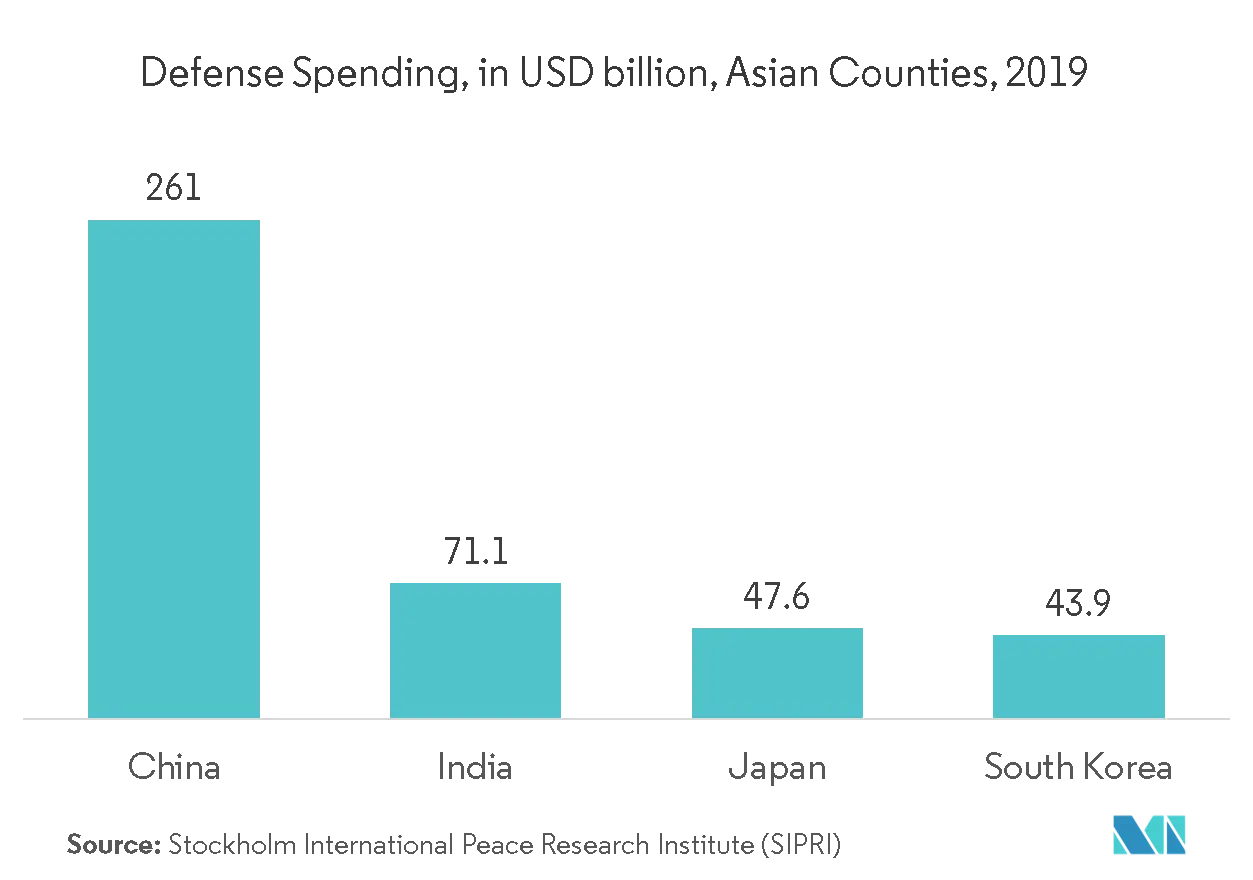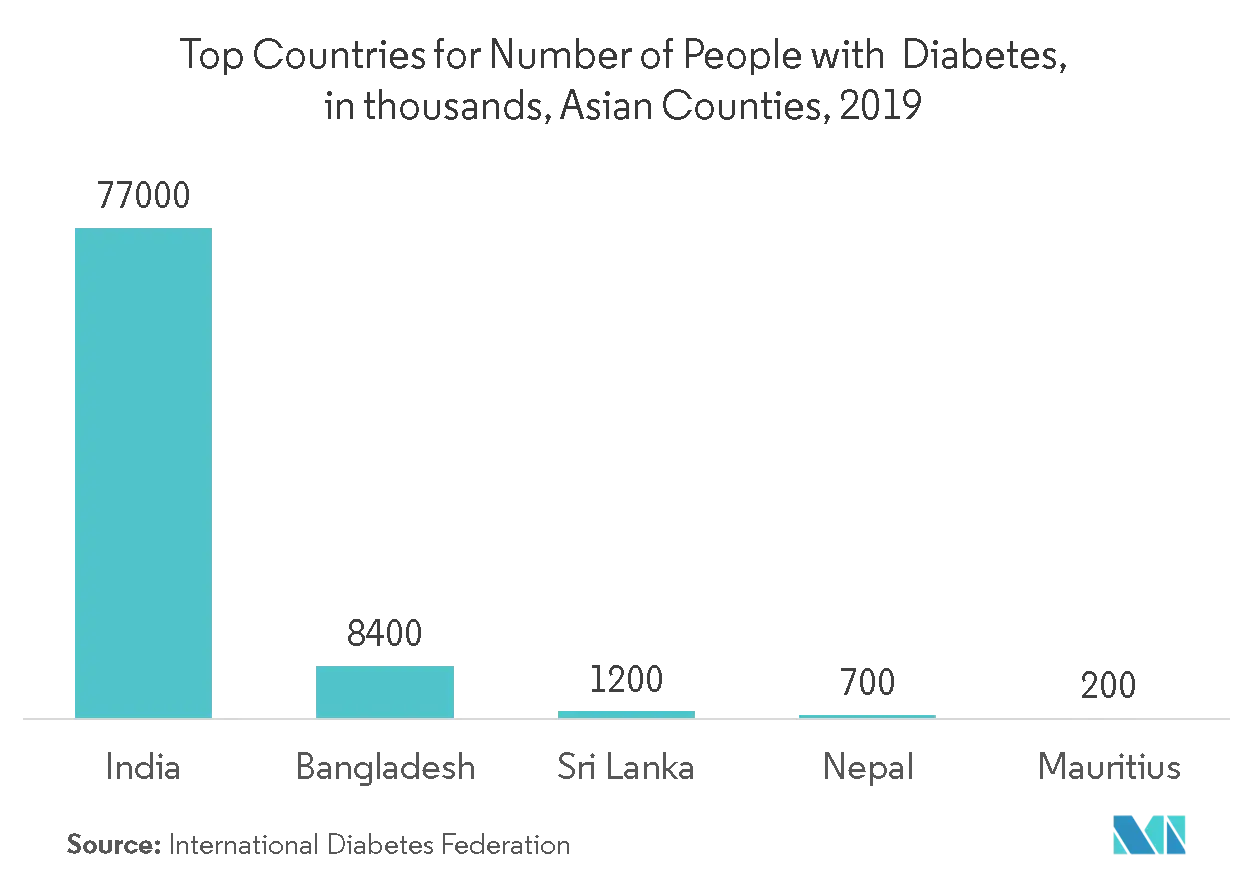Market Trends of APAC Chemical Sensors Industry
This section covers the major market trends shaping the APAC Chemical Sensors Market according to our research experts:
Defense Security to Register the Fastest Growth
- The defense sector has an urgent need for the development of sensors for early warning and protection of military forces against potential chemical and biological (C/B) attacks. The continued trend in heavy military spending among Asia’s military powers comes amid a broader upward trend in global defense spending.
- Chemical detection using existing sensor systems is facing a major challenge of selectivity. They are often slow, expensive, unwieldy, lab-based, and usually lack sufficient sensitivity and selectivity. Terrorists use biological agents because they are often difficult to detect, and illness onset may be delayed for hours to days, increasing dispersal. Among a variety of detection methods that have been developed, electrochemical sensors offer the unrivaled merits of high sensitivity, specificity, and operational simplicity.
- However, the ongoing war on terrorism and the rising security concerns are driving the need for newer, faster biosensors against bio-warfare agents for both military and civil defense applications. Nanotechnology is playing an increasingly important role in the development of biosensors.
- With a huge amount of investments being made in research and development activities and the advent of advanced new generation nanosensors, equipment that helps in the detection of toxic gases such as anthrax is expected to have a positive impact on the market. In military and homeland security, nanosensors are also used for the detection of biotoxins and radiations. Thus, nanotechnology has enabled the manufacturers to develop advanced Warfield gear such as self-repairing tents and lighter vehicles, which in turn is driving the market.
- For instance, China is building the world's largest multifunctional research platform for nanotechnology. The Vacuum Interconnected Nano-X Research Facility in Suzhou, Jiangsu Province, integrates the state-of-art capabilities of material growth, device fabrication, and testing in one ultra-high vacuum environment. It is expected that in the coming future, the market for nano chemical sensors in defense security will cater the market growth.

Medical Industry Accounts for Significant Market Share
- The healthcare sector is a major market for chemical sensors, owing to the increasing demand for rapid, compact, accurate, and portable diagnostic sensing systems. The rising demand for the next generation of clinical diagnostics, measuring, and monitoring sensors for applications in implantable and wearable devices have created huge opportunities with exponential growth potential for the market.
- Recently, the Korea Advanced Institute of Science and Technology (KAIST) developed chemical nanosensors that rapidly analyze the components of exhaled breath to detect trace molecules associated with certain diseases.
- Further, with the increasing rates of patients suffering from diabetes, government bodies in various countries are investing in developing effective diagnostic techniques. For instance, the Ministry of Health Labour and Welfare (MHLW) in Japan granted national reimbursement for the FreeStyle Libre glucose monitoring system. The revolutionary system was aimed to be widely available to more than a million Japanese nationals aged six and above with diabetes. This stimulated the chemical sensors adoption in the healthcare sector.
- India has a huge population suffering from diabetics, so the requirement of a device integrated with a chemical sensor is most vital. Recently in December 2019, researchers, including Indian scientists from the CSIR-Central Electrochemical Research Institute (CSIR-CECRI) have invented a semiconductor-based sensor that can simultaneously detect glucose and generate power from bodily fluids. The sensor will be useful for the early diagnosis of diabetes and other related metabolic disorders. They developed a fuel cell using the sensor, which converts the chemical energy of glucose and oxygen into electrical power.
- It generates enough power to operate an organic electrochemical transistor. The researchers say that the innovation could pave the way for the development of low-cost, stable biofuel cells that would utilize glucose to power other electronic devices.
- Further, a wide scope of untapped potential lies in harnessing the nanoscale architectural properties of natural biological materials to develop high-performance sensors. The researchers from Singapore and China provided the development of an ultrasensitive chemical sensor that is based on the three-dimensional (3D) biomimetic templating of a structurally hierarchical butterfly wing.
- In conjunction with graphene sheet coating strategies, the porous 3D architecture enables highly selective detection of diabetes-related volatile organic compounds (VOCs), including a rapid response time (≤1 s), a low limit of detection (20 ppb), and superior mechanical properties. It provides a significant opportunity in the future to integrate natural biological materials into high-performance sensors, with excellent potential for wearable and flexible sensors.

